
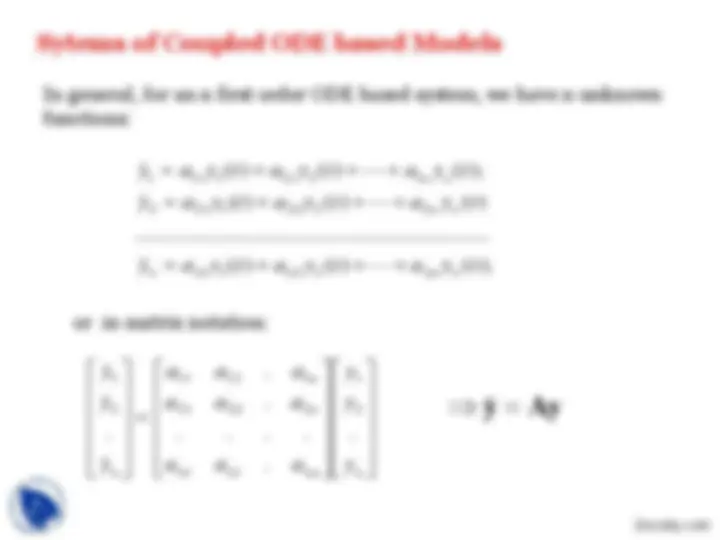
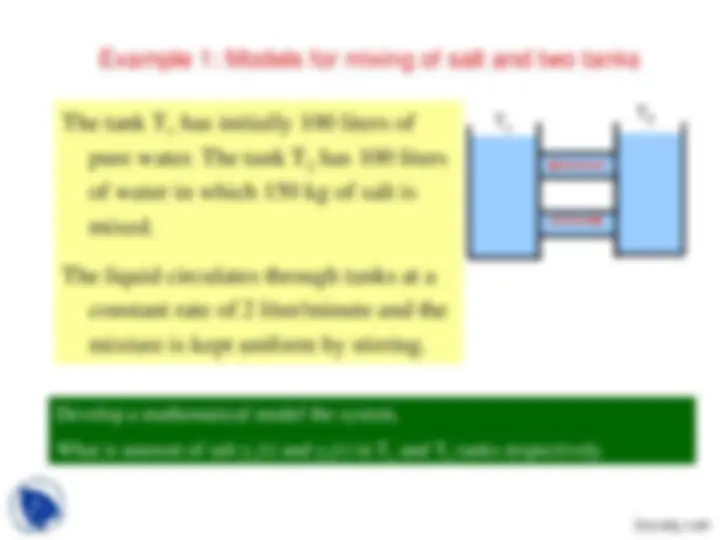
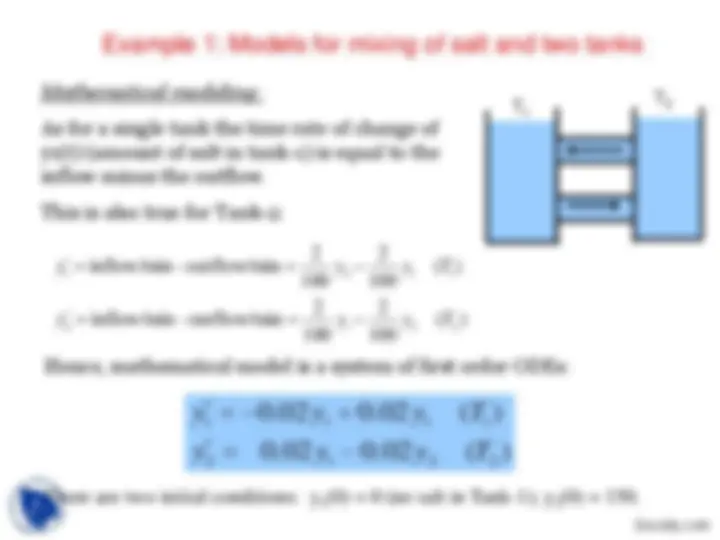
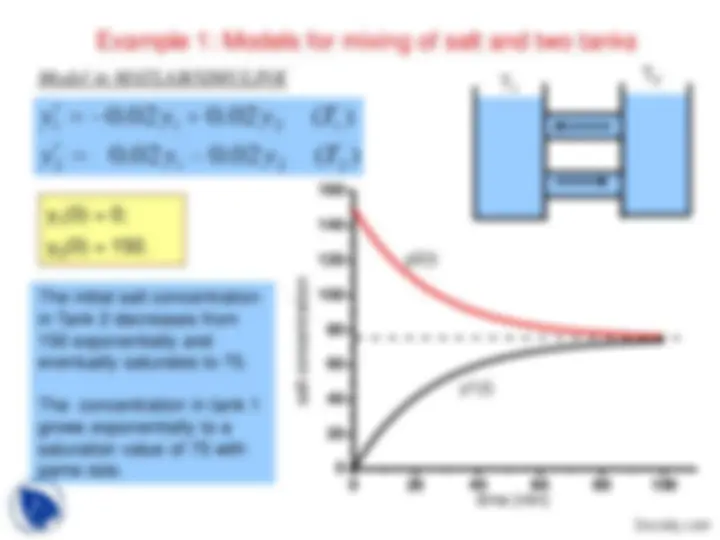
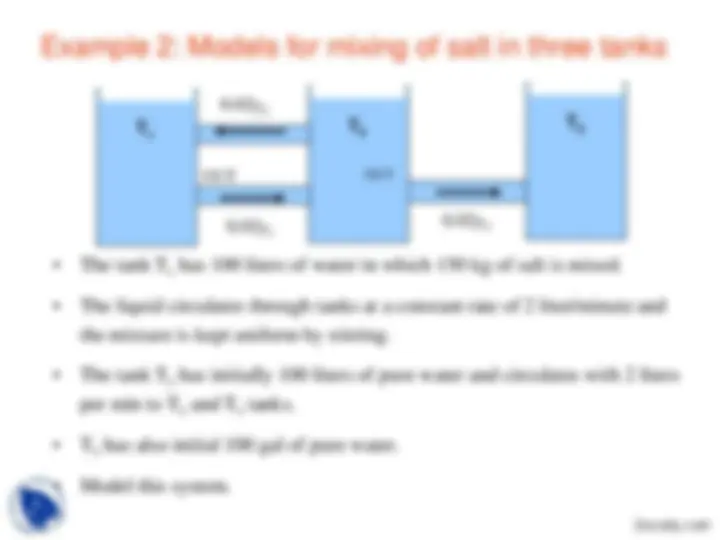
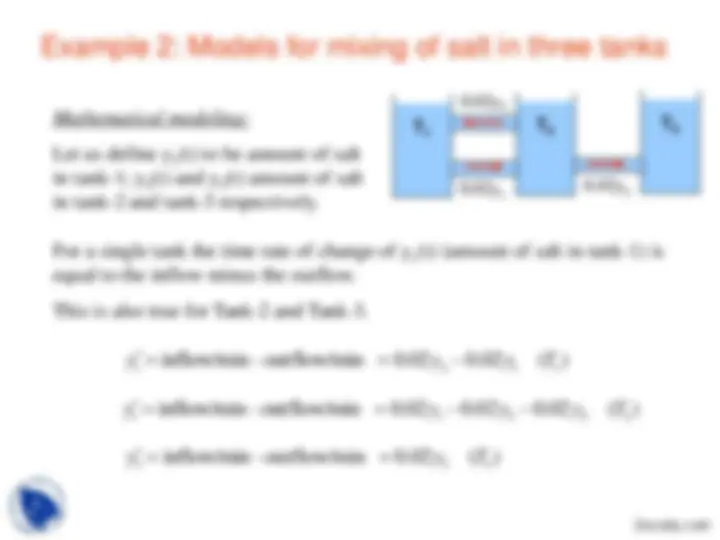
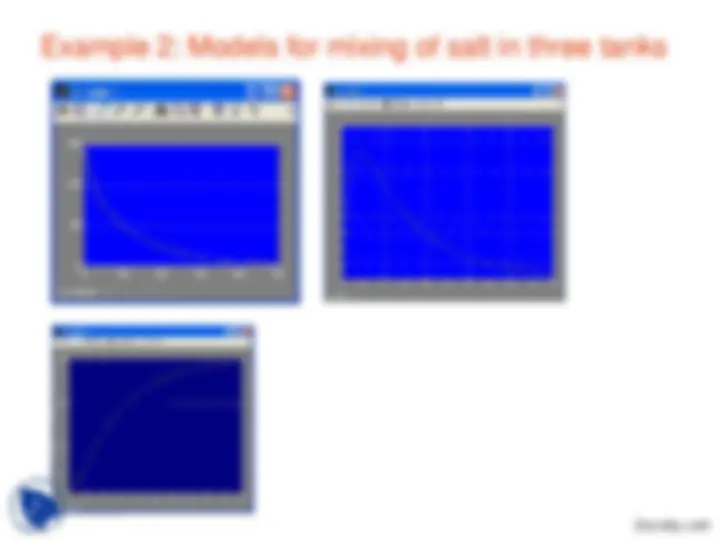
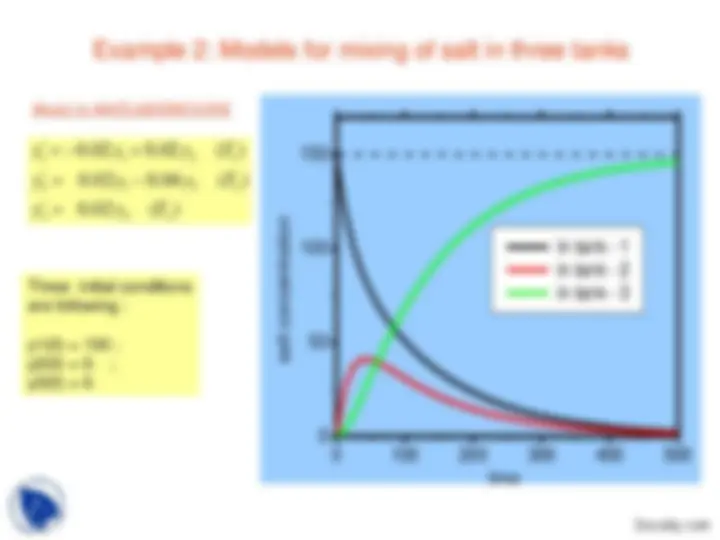
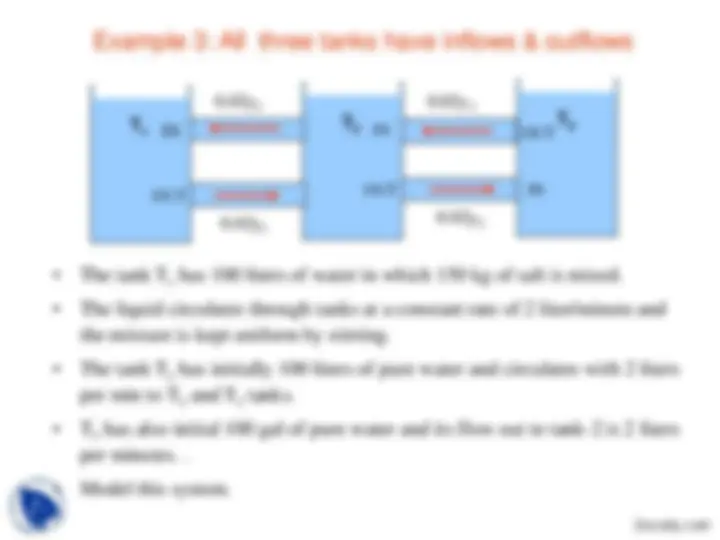
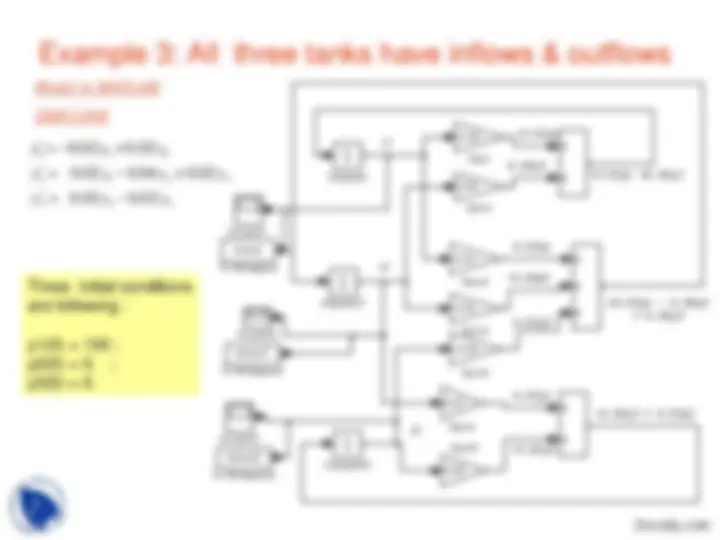
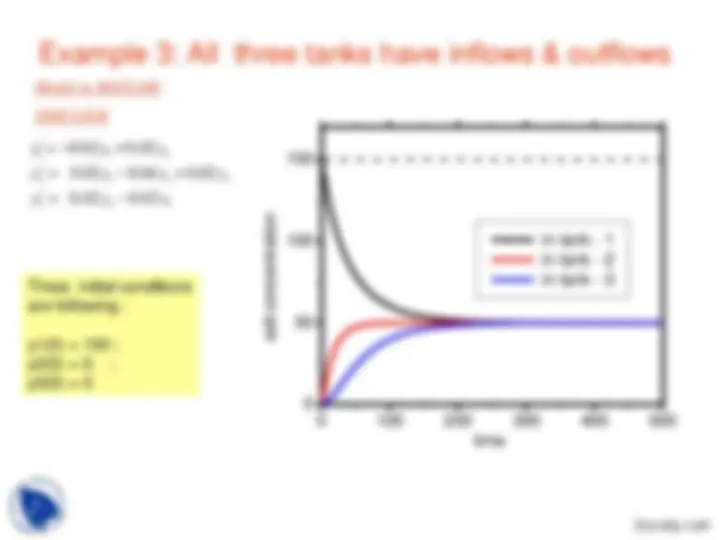
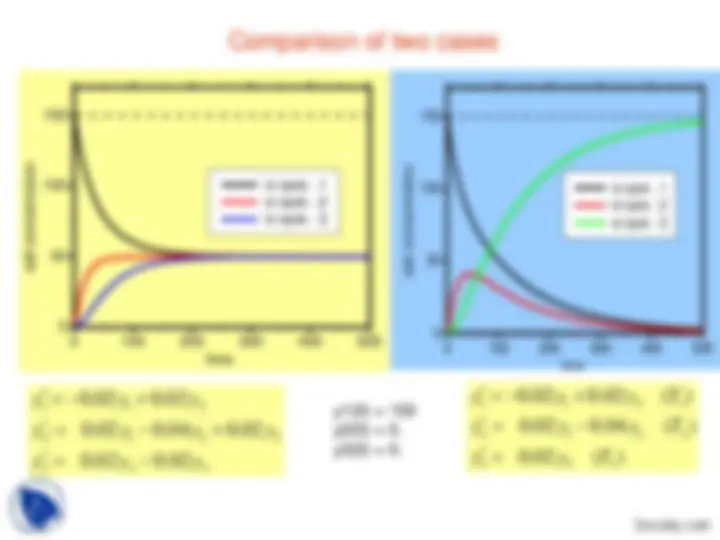
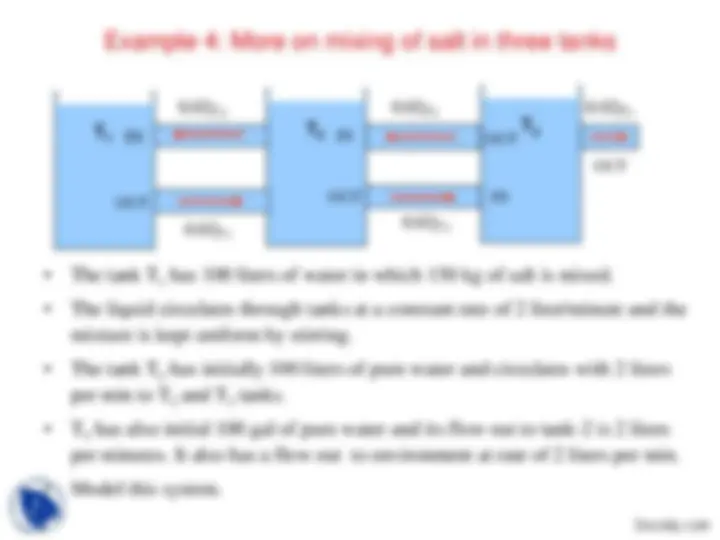
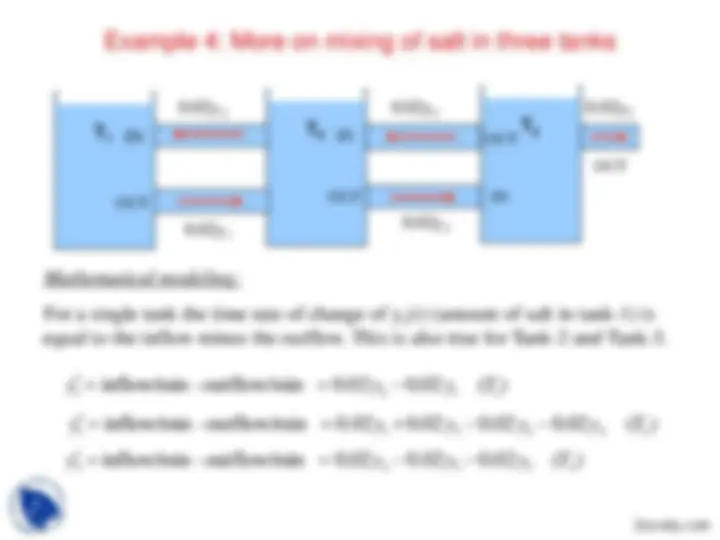
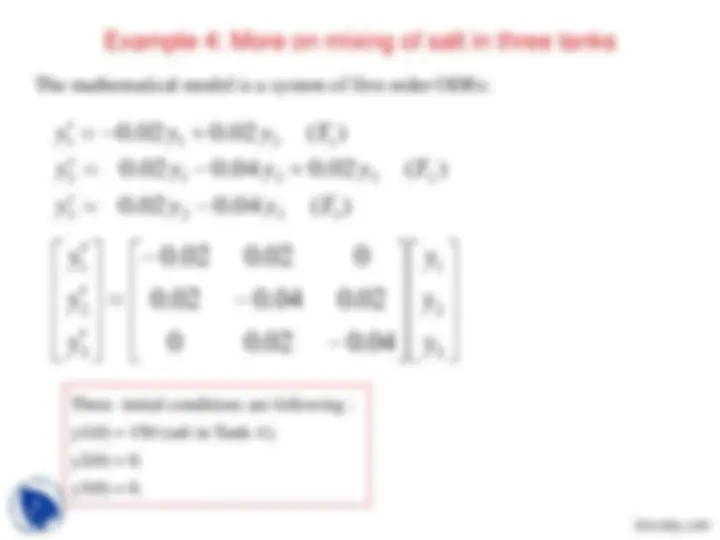
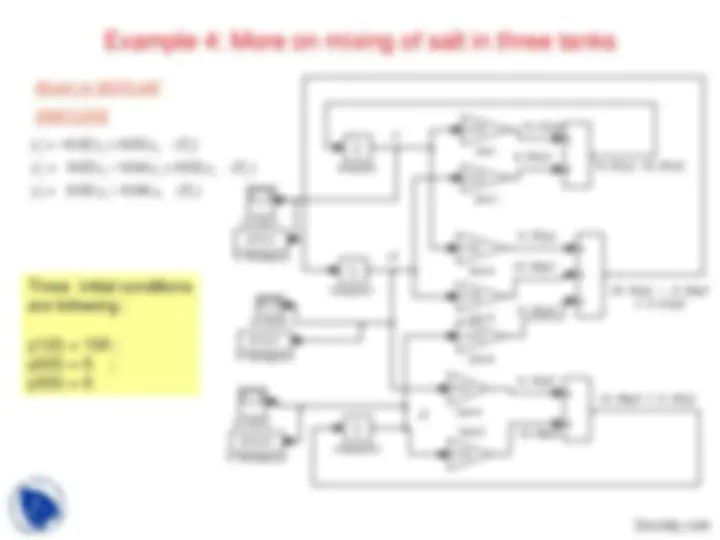
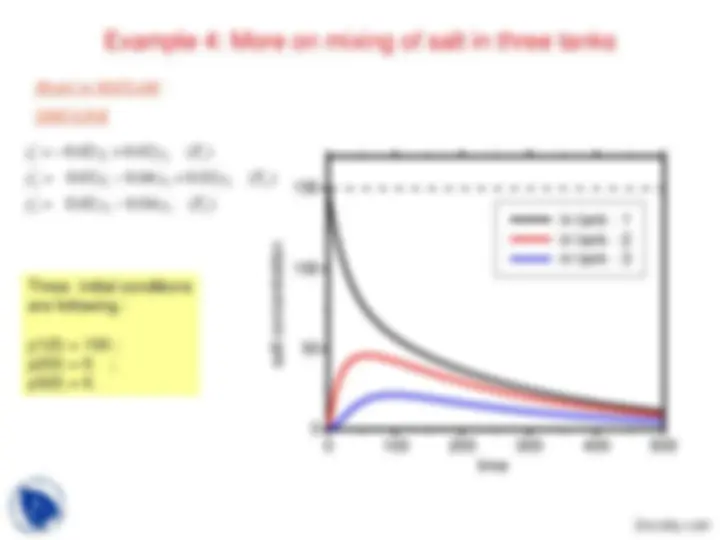


Study with the several resources on Docsity

Earn points by helping other students or get them with a premium plan


Prepare for your exams
Study with the several resources on Docsity

Earn points to download
Earn points by helping other students or get them with a premium plan
Community
Ask the community for help and clear up your study doubts
Discover the best universities in your country according to Docsity users
Free resources
Download our free guides on studying techniques, anxiety management strategies, and thesis advice from Docsity tutors
These lecture slides are delivered at The LNM Institute of Information Technology by Dr. Sham Thakur for subject of Mathematical Modeling and Simulation. Its main points are: First, order, Coupled, Models, Fluid, Coupled, ODE, MATLAB, Mathematical
Typology: Slides
1 / 25

This page cannot be seen from the preview
Don't miss anything!


















Lecture: First order Coupled Models Models : Fluid models
Most of coupled or simultaneous linear models consist of two ODEs intwo known functions y(t) and z(t) with following form:
( ) ( )
21 22
11 12 dzdt a y t a z t
dydt a y t a z t
For example,
13 ( ) 0. 5 ( )
dzdt y t z t
dydt y t z t
Develop a mathematical model the system. What is amount of salt y 1 (t) and y 2 (t) in T 1 and T 2 tanks respectively.
T 1 T^2
Mathematical modeling: As for a single tank the time rate of change of y1(t) (amount of salt in tank-1) is equal to theinflow minus the outflow. This is also true for Tank-2:
Hence, mathematical model is a system of first order ODEs:
inflow/min -outflow/min 1002 1002 ( )
inflow/min-outflow/min 1002 1002 ( ) 2 1 2 2
1 2 1 1 y y y T
y y y T
There are two initial conditions: y 1 (0) = 0 (no salt in Tank-1); y 2 (0) = 150.
T 1 T^2
Model in MATLAB/SIMULINK
y
y y2^ y1 +0.02y -0.02y
-0.02y +0.02y To Workspace1^ y
To Workspace^ y2 Integrator1^1 s
Integrator^1 s
-0.02 Gain
0.02 Gain
0.02 Gain
-0.02 Gain
Floating Scope
Floating Scope
y y 12 (0) = 0;(0) = 150.
T 1 T^2
Model in MATLAB/SIMULINK
T 1 T^2
(^00 20 40 60 80 ) 2040
6080
100120
140160
y1(t)
y2(t)
salt concentration time (min)
The initial salt concentrationin Tank 2 decreases from 150 exponentially andeventually saturates to 75. The concentration in tank 1grows exponentially to a saturation value of 75 withsame rate.
For a single tank the time rate of change of yequal to the inflow minus the outflow. 1 (t) (amount of salt in tank-1) is This is also true for Tank-2 and Tank-3. y 1 inflow/min - outflow/min 0. 02 y 2 0. 02 y 1 ( T 1 ) y 1 inflow/min - outflow/min 0. 02 y 1 0. 02 y 2 0. 02 y 2 ( T 2 ) y 3 inflow/min - outflow/min 0. 02 y 2 ( T 3 )
0.02y (^2) T 2 0.02y 1 0.02y 2
Mathematical modeling: Let us define y 1 (t) to be amount of salt T 1 T 3 in tank-1; y in tank-2 and tank-3 respectively. 2 (t) and y 3 (t) amount of salt
Example 2: Models for mixing of salt in three tanks
Hence, mathematical model of the mixtureproblem is a set of first order ODEs:
02 ( )
02 0. 04 ( )
02 0. 02 ( ) 3 2 3 2 1 2 2
1 1 2 1 y y T
y y y T y y y T
3
2
1 3
2
1 0 0. 02 0
02 0. 04 0
02 0. 02 0 y
y
y y
y
y
Three initial conditions are following :y1(0) = 150 (salt in Tank-1); y2(0) = 0. ; y3(0) = 0.
0.02y (^2) T 2 0.02y 1 0.02y 2
T 1 T 3
Example 2: Models for mixing of salt in three tanks
Example 2: Models for mixing of salt in three tanks
Model in MATLAB/SIMULINK 00 .. 0202 0 (.^04 ) ( )
1 1 2 1 yy yy T y T
y y y T
Three initial conditions are following : y1(0) = 150 ; y2(0) = 0. y3(0) = 0. ;
(^00 100 200 300 400 )
50
100
150
salt concentration
time
in tank - 1 in tank - 2 in tank - 3
equal to the inflow minus the outflow. This is also true for Tank-2 and Tank-3.For a single tank the time rate of change of y^1 (t) (amount of salt in tank-1) is y 1 inflow/mininflow/min - -outflow/mioutflow/minn 00 .. 0202 y 2 00 .. 0202 y 1 ( 0 T. 102 ) ( ) yy 3 ^1^ inflow/min - outflow/min 0. 02 yy 21 0. 02 yy^23 ( T 3 ) y^2 T^2
0.02y (^2) T 2
0.02y 1 OUT 0.02y^2
T 1 IN T^3 OUT
IN (^) OUT IN
0.02y 3
Mathematical modeling: Let us define y in tank-2 and tank-3 respectively.^1 (t) to be amount of salt in tank-1; y^2 (t) and y^3 (t) amount of salt
Hence, mathematical model is a system of first order ODEs:
02 0. 02 ( )
02 0. 04 0. 02 ( )
02 0. 02 ( ) 3 2 3 3
2 1 2 3 2 1 1 2 1 y y y T y y y y T
y y y T
3
2
1 3
2
1 0 0. 02 0. 02
02 0. 04 0. 02
02 0. 02 0 y
y
y y
y
y
Three initial conditions are following : y 1 (0) = 150 (salt in Tank-1); yy 23 (0) = 0.(0) = 0.
Example 3: All three tanks have inflows & outflows
32 21 23 3
1 1 2 00 .. 0202 00 ..^04020.^02
y y y
Model in MATLAB/ SIMULINK
Three initial conditions are following : y1(0) = 150 ;y2(0) = 0.y3(0) = 0. ; (^00 100 200 300 400 )
50
100
150
salt concentration time
in tank - 1 in tank - 2 in tank - 3
(^00 100 200 300 400 )
50
100
150
salt concentration time
in tank - 1 in tank - 2 in tank - 3
(^00 100 200 300 400 )
50
100
150
salt concentration time
in tank - 1 in tank - 2 in tank - 3
32 12 23 3
1 1 2 00 .. 0202 00 ..^04020.^02
y y y
00 .. 0202 0 (.^04 ) ( )
1 1 2 1 yy yy T y T
y y y T
y1(0) = 150 y2(0) = 0. y3(0) = 0.